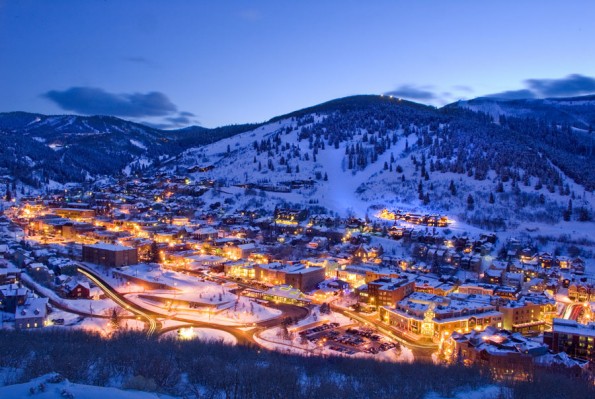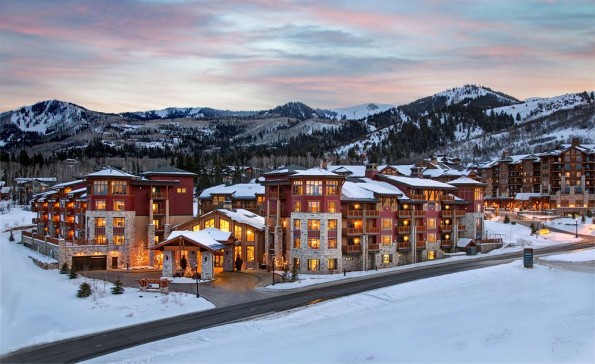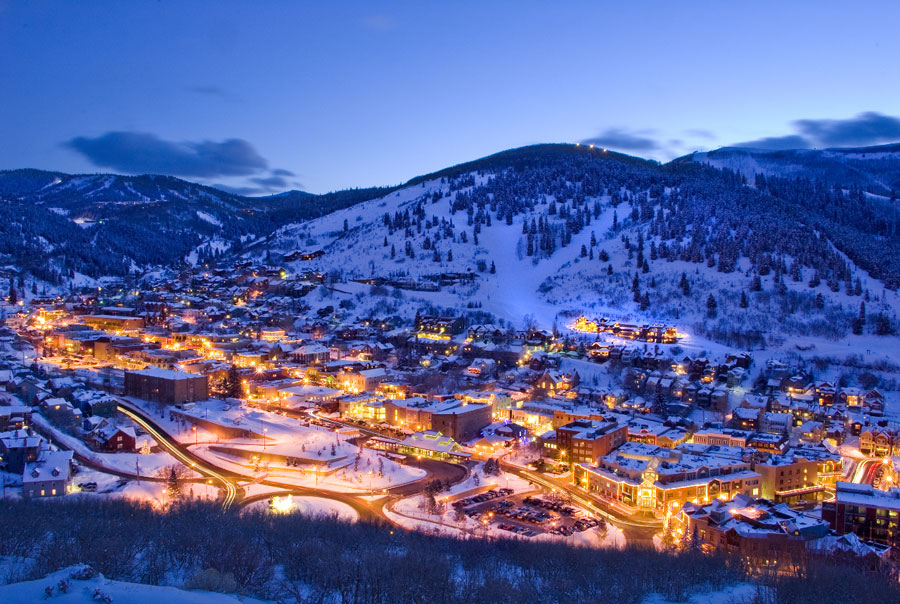
The Mountain Accord agreement reached July 13, 2015, represented a mind-blowing level of collaboration among dozens of stakeholders from ski resort moguls to grassroots eco-advocates. In terms of government agencies, nearly two dozen different jurisdictions were represented in perhaps the state’s most impressive pyramid of state, local and federal policymakers all coming together to reach one noble goal: a design to guide the future growth and protection of the mountains and canyons of the Wasatch Front.
Despite fears of an avalanche of disagreement among competing government, environmental and business interests, Phase 1 of the process has been lauded as a towering success. But even still, the plan has not yet been finalized as it now enters the crucial Phase 2—execution. Still up in the air are critical questions such as how transportation will be designed to protect the canyons and continue to smoothly funnel snow-hungry Utahns to the resorts in the winter and hikers, bikers and anglers in the warmer months. Will Little and Big Cottonwood canyons be connected by tunnels, roads or ski lifts?
Carl Fisher, executive director of Save Our Canyons says previous canyons planning efforts had always been thwarted by short-sighted policy making.
“There are probably 20 different jurisdictions in an area that’s about 200 square miles,” Fisher says. “So if you do the math, every government entity has about 10 square miles of jurisdiction. It’s chaos, it’s managing a landscape in kind of a quilt-like pattern where the entities are looking at their individual box of jurisdiction. There [wasn’t] anyone looking at the landscape as a whole.”
Fisher points to a tall bookshelf in the nonprofit’s office as proof. The shelves are packed with file folders and binders, nearly 50 pounds of paper documenting past plans for the Wasatch that were never realized.
“The concept of the Mountain Accord was not to just publish another study to take up real estate on a bookshelf but to emerge with an action plan and actually to act upon the things we all said we were going to do,” Fisher says.
Utah Conservation: Compromise and Congress
The Mountain Accord process began in earnest in 2013 says Mountain Accord program manager Laynee Jones, and in two years succeeded in bringing together dozens of parties together to an agreement signed off on by Governor Gary Herbert and the support of Utah’s conservative federal delegates. This accomplishment came with it a specific commitment to some major guiding principles as well as some very specific actions.
For the big picture, stakeholders recognized that they want the world-class recreational opportunities of the canyons to remain as open and accessible as they are today for future generations. At the same time they also recognize the canyons are more than a source of fun. They’re also a natural gem worth preserving, and a critical water source.
“We’ve got over half a million people relying on that water and we want to make sure 100 years from now we will still have clean water coming out of the mountains,” Jones says.
One of the principles that the accord recognized was that preservation of the canyons means encouraging the use of mass transit for people visiting the Wasatch Mountains and discouraging more cars from clogging canyon roads.

One of the accord’s biggest feats was brokering a win-win between the resort industry and environmental advocates such as Save Our Canyons. Accord members realized that the ski resorts owned a patchwork of parcels spread out across high ridge lines, most of it pristine backcountry and important watershed areas. Ironically, however, they don’t own the land around the bases of their resorts, which is instead owned by the United States Forest Service. The deal was then struck to trade high ridge acres for protection against development for acreage around the resort bases that could then be developed.
“So we protect 1,500 acres and give away a couple hundred at the base areas. That’s a huge win for conservation,” Fisher says.
Still the conservation crowd has to concede other points, for example, allowing that heli-skiing would still be allowed in certain otherwise protected areas.
For Program Manager Jones, the give and take was critical for the plan to move forward.
“All sides of the equation give up a little bit but get something out of it,” Jones says, thus ensuring that “we get a certain future and can lay down our swords.”
“We didn’t get as much wilderness as we would have liked,” Fisher says, “but in giving up 20,000 acres of wilderness we gained 80,000 acres of a more protective boundary that I think will lead to an equally desirable end result.”
The accord would involve land swaps of federal land and the creation of unique designations that would protect lands against development while still allowing certain forms of recreation. All this requires a bill to be passed in Congress. So far, Fisher says Utah’s delegates are on board with the accord.
But not all land matters have been agreed upon. Some contentious points are contingent on what canyon transportation the accord agrees, a main focus of Phase 2.
Rails to Trails in Utah Mountains?
The recreation industry, like other stakeholders in the process, recognized that if Utah’s population doubles in the next few decades then millions of Utahns heading to a handful of high-elevation points in the Wasatch Range would mean more wear and tear than the canyons could take.
“We need to think longer term,” says Paul Marshall, a spokesman for Ski Utah. “We need to make sure I-80 doesn’t become as backed up as I-70 in Colorado.”
A handful of proposed transportation solutions range from the cheap and practical, such as shuttles and buses, to the grand but costly idea of tunnels or a light rail train. Accord members also realized that with so much at stake, the process needed to be as impartial as possible. To that end, the ideas proposed will be subject to federal study governed by the National Environmental Policy Act.
When it comes to tunnels, trains and lifts, Fisher says “these aren’t new ideas, but the process we’re going through to analyze these things is new— [An] open and transparent and very public process.”
When concluded, the federal study will provide the most guidance. Still, different interest groups have their own dogs in the hunt.
The ski industry has proposed a model for connecting different resorts through aerial lifts, dubbed “One Wasatch.” One Wasatch would connect Snowbird to Deer Valley to Brighton through lifts constructed on land already owned by the resorts.
According to Marshall, the resorts could start construction tomorrow if they wanted, but like other accord members they want to wait to see what shakes out from the federal study.
“We’re just interested in whatever will help in the best economically and most eco-friendly way,” Marshall says. “And honestly we’re not surveyors, we’re not in a position to say this is the best way.”
Salt Lake County Mayor Ben McAdams who also acts as the chairperson for the accord process, wants to see what the study shows. However he’s not crazy about towering aerial lifts spanning across ridge lines.
“It mars the landscape to put up a bunch of lifts,” McAdams says.
He sees a logic to a bus system or even a train as long it would be combined with significant restrictions on cars heading up the canyon.
The train idea most likely inspires the most awe or fear depending on your view of alterations to the existing canyon. The idea has plenty of strikes against it. If it were feasible it would still likely be a multi-billion project. For safety-sake alone, the project would need a sizeable injection of federal dollars.
McAdams says it would need to be aligned differently from existing canyon roadways given the fact that those roads are already fairly dangerous for avalanche risk during the winter months.
That being said, in the long run a train might be better for the canyons’ environmental health then simply adding more buses to existing canyon roadways.
“Train tracks are really permanent and you’re not polluting the watershed as much as with roads because you’re not salting or putting other chemicals on it to keep the road driveable during winter months,” McAdams says.
For longtime general manager of Alta Ski resort, Onno Wieringa, improving canyon roads are key, especially in Little Cottonwood Canyon.
“It’s a high avalanche number on this road so we either need some different control technology, or we need to relocate mid-canyon sections of the road or put in a guideway, or a bus guideway and put it outside of the avalanche runout,” Wieringa says.
Fisher of Save Our Canyons likes the idea of buses and perhaps a bus rapid transit line, one that might have a dedicated vehicle lane winding up the canyon, that would make for easy shuttling but also perhaps encourage people to take mass transit to avoid traffic jams. His organization has proposed a shuttle idea, whereby empty school parking lots during the weekends and empty church parking lots during weekdays might be used as park and ride locations for people to take shuttles up the canyon. These modes of transportation Fisher imagines will likely seem a lot more realistic once someone actually starts calculating numbers for something like a train system.
“We’ve been allowed to dream a little bit, but at the end of the day, reality is going to insert itself into the process,” Fisher says.
What’s Next for Mountain Accord?
While accord members wait for the transportation studies to come back over the next year and a bill to be passed in Washington D.C. in the coming months, other aspects of the accord are far from resolved.
One piece of land that hasn’t been amicably exchanged is that of Grizzly Gulch, a much beloved piece of canyon country that offers the fastest and safest access for back-country skiers to the upper ridge lines. It’s also an area where most of the land is privately owned by Alta that has considered placing a ski lift there that could be used to connect Big and Little Cottonwood canyons. Such a lift would make it harder for back-country enthusiasts to access their snowy stomping grounds. Alta, however, has said that if the Mountain Accord process finds another way to connect the canyons whether it’s by other lifts, tunnels or a train than it would simply donate the land.
“Some people thought they were holding us over a barrel with that,” Mountain Accord program manager Jones says. But she adds that it is land the company owns already after all, and that the company hasn’t made any decisions yet.
Wieringa says that while it may seem to some like a “hardball” tactic, he says all parties in the accord have been involved in a sometimes tough give and take in the process.
“It’s a grand compromise,” Wieringa says of the accord.
Salt Lake County is already moving forward on other aspects of the accord process. Currently, McAdams says the county is developing an “environmental dashboard” that, for the first time in the canyons’ aeons-old history, would track water quality, tree and wildlife populations and other metrics of a healthy ecosystem.
“Then [we’ll] have something we update yearly so we know what’s happening in the canyons, so we have a baseline,” McAdams says. “Right now we don’t have a baseline for the environmental quality of the canyons.”
There are still big, small and in-between issues left to resolve with the agreement, but Fisher takes heart from the accord’s success so far.
“Perhaps never in our state’s history have we seen a collaboration on par with Mountain Accord,” Fisher says. “On the one hand, yes, execution is difficult, and on the other hand, if this doesn’t work, I don’t know what will.”
Read our previous story on Ski-Nomics and how Vail Resorts earns their profits.
To learn more about job and volunteer opportunities and to find out about meetings visit MountainAccord.com






